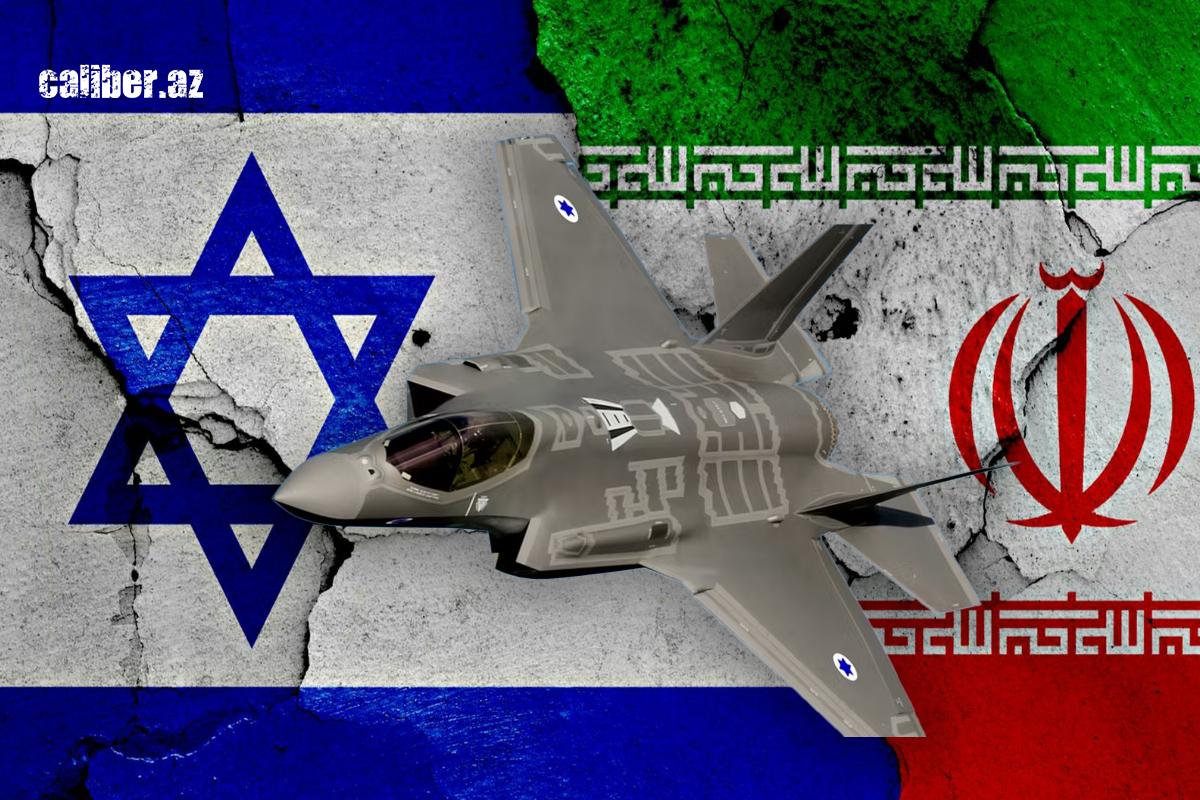War for shaping the future of the Middle East Clash of visions and powers
While the fog of war surrounding the escalating conflict between Israel and Iran does not yet allow for confident conclusions about the state and prospects of the battlefield, it is clear that sooner or later this war will reveal the real balance of power in the Middle East, opening opportunities to implement a realistic vision for the region’s future.
The war between Israel and Iran is rapidly gaining momentum and scale with each passing day. Hardly anyone, including in Israel itself, expected that a direct clash between these two militarily powerful Middle Eastern states could quickly end with the complete defeat of one of them. At the same time, it is obvious that the Israeli leadership decided to launch the military campaign with a carefully calculated plan of action, based on unique intelligence data. Israeli intelligence services and the state as a whole have long been known for this style. However, as usually happens, even the most well-thought-out and precise military operations, when intersecting with numerous factors on the battlefield and in accompanying political processes, cease to be fully controllable. And the longer the fighting lasts, the less control any participant can have over the entire conflict picture.
The prospect of further escalation and regional chaos
Over the past year and a half, the Middle East has rapidly undergone a significant escalation. Not long ago, Jake Sullivan, then serving as the U.S. President’s National Security Advisor, confidently declared that "The Middle East region is quieter today than it has been in two decades." Yet, barely a week later came October 7, 2023 — an event that clearly became a new turning point in Middle Eastern history. This was followed by a series of tragic incidents with serious and far-reaching consequences for the entire region.

In April 2024, Iran directly attacked Israel from its own territory for the first time in history. At that moment, it was seen as the opening of a new chapter in the Middle Eastern confrontation. And indeed it was, although today those events seem just like another step on the steep ladder of escalation. Now, direct exchanges of strikes between Israel and Iran are an increasingly large-scale reality. At present, there are no signs that conditions for de-escalation will be established in the near future. This does not mean that such prospects are entirely ruled out. However, everything today points toward further vertical and horizontal escalation of the conflict, driven by an increase in the destructiveness of reciprocal strikes and the expansion of actors involved in military actions.
In other words, after rapidly climbing the ladder of escalation, the direct military conflict between Israel and Iran is becoming, as political analysts like to say, the new normal. The Middle East and the entire world remain in shock from the ongoing events, but unfortunately, such shock—both on the ground and in the news cycle—quickly turns into routine. Diplomacy is now, in any case, pushed far into the background, despite loud calls from many world capitals urging the resumption of diplomatic processes.
The fog of war—even in today’s world, where technology seemingly allows us to see everything and where nothing can be hidden—makes it difficult to analyse the current operational situation and the real capacities of both sides to sustain such a high-intensity direct confrontation. This will only become clear after some time. Then there will be greater clarity about the possibility of returning to the negotiating table and what it will even make sense to discuss and agree upon, including on a broader scale across the entire Middle East.
So far, if anything is clear, it is that we will soon get an answer to a long-standing question. For many years, analysts both within the Middle East and beyond have forecasted and modelled various scenarios of Israeli attacks on Iran aimed at destroying or at least halting Iran’s nuclear program. There has never been a consensus on the most likely outcome of such a (previously hypothetical) military scenario. Some were confident that Israel, alone or with its allies, could quickly and effectively accomplish all its military objectives in Iran. Others, on the contrary, believed that even in theory, success in such an undertaking was impossible.
Now, the Israeli government, led by Benjamin Netanyahu, has moved from discussions and declarations to the practical implementation of a long-prepared military plan concerning Iran and its nuclear program. At the very least, this will clarify the long-standing debates and forecasts among analysts: the entire world will see which predictions prove accurate. Such clarity will be important beyond the Middle East, as it appears that the issue of nuclear proliferation is once again returning—prominently and for the long term—to the top of the global political agenda.
Any scenario will fundamentally reshape the Middle East
It can also be stated with confidence that under any scenario of how events unfold, the Middle East will be geopolitically profoundly reshaped. At the very least, as a result of the currently escalating large-scale power struggles, the decades-long uncertainty regarding the regional balance of power—and the potential to alter that balance through available resources, creative approaches, and political will—will sooner or later disappear. This, in turn, will provide critically important information to understand which models of regional cooperation and security—or lack thereof—will be realistic within a tangible timeframe.
Until recently, analysts (albeit somewhat tentatively) spoke of several visions for the future of the Middle East. In reality, of course, there have always been, are, and will be far more visions and ideas about how the region might and should look. In such a diverse and polyphonic region as the Middle East, it could not be otherwise. However, recently a few visions have indeed come to the forefront.

The central vision among these was the model of regional cooperation, the foundations of which were laid by the first administration of Donald Trump. At that time, work began on the so-called Abraham Accords, which aimed at the historic normalisation of relations between Israel and a number of Arab states. In particular, Israel succeeded in signing agreements with Bahrain, Morocco, and the United Arab Emirates. Special hopes were attached to a bilateral agreement between Israel and Saudi Arabia, which was also expected to be concluded within the framework of the Abraham Accords. This potential agreement likely was one of the main targets of Hamas’s attack on Israel on October 7, 2023. A formalised mutual understanding between Saudi Arabia and Israel would have been a deadly blow to many interests and their holders in the region. Especially if it had been further reinforced by a defence pact between Riyadh and Washington, as well as a more substantive dialogue between Israelis and Palestinians.
It is telling that the Biden administration continued the Abraham strategy initiated by Trump. This is understandable, as it aimed to further deepen Middle Eastern cooperation and stability based on American interests and leadership. Equally understandable is that this did not align with the interests of many other regional and extra-regional actors. Therefore, alternative visions emerged, even if they were not formalised in international agreements or even articulated as public concepts on paper. For example, it is clear that Iran had (and still has) entirely different plans for the Middle East. Its interest is not merely to disrupt the plans set out by the Abraham Accords, but to significantly weaken Israel and, if possible, gradually push the United States out of the region.
These conflicting visions were based on the accumulating uncertainty regarding the military and political capabilities of the key actors in the Middle East. American ideas reflected the status quo of recent decades, where the absolute dominance of the United States in the region was unquestioned. However, against the backdrop of obvious structural changes worldwide—marked by the end of the multipolar era in international relations—such doubts naturally began to arise in the Middle East as well. This occurred even though maintaining the central role of the U.S. in regional security aligns not only with Israel’s interests but also with those of many Arab states.

It is difficult to say whether Israel itself—and its dominant political forces, especially after October 7, 2023—fully embraced the American vision as the guiding star of its own strategy. However, it is clear that through all its military campaigns over the past year and a half, the Israeli government aims, among other things, to eliminate uncertainty regarding the realism of Iran’s plans. It seeks to demonstrate both to the world and to Tehran that the Iranian vision has no future. Whether it will succeed remains to be seen. But in any case, we repeat: as a result of the escalating conflict unfolding before our eyes, the real balance of power in the region will gain some clarity. Along with that, the prospects of various visions will become clearer as well.
Despite the current overwhelming escalation dynamics and the widespread belief that, after October 7, 2023, Israel’s leadership no longer wants to hear about a regional architecture based on mutual commitments and deterrence, sooner or later a new regional security system will have to be established. Perhaps in such a system, shifting the focus away from mutual deterrence would indeed be important. But if that is the case, it would by definition require diplomacy and strengthened confidence-building measures. A system cannot be built— even in theory—solely on military pressure and hanging threats, let alone made sustainable.
That is why clarifying the real balance of power and arrangements, which will ultimately become the accepted consensus, is all the more important. However, as always, it is crucial to ensure that this clarification does not lead to a universal tragedy.








